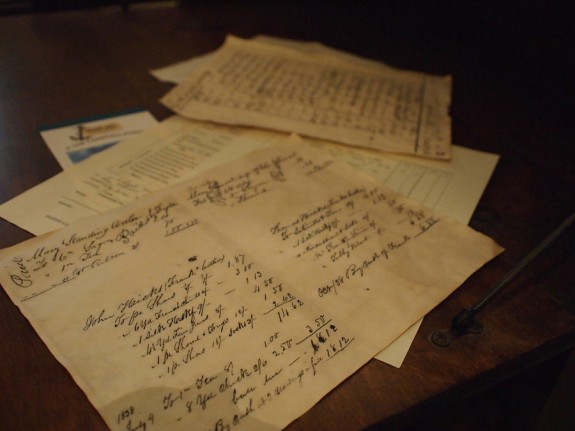Every story needs a solid, vivid world that readers can lose themselves in for hours and remember long after they’ve reached The End. Whether that world is another planet, a land of mythical creatures, ancient Egypt, or a modern-day university doesn’t matter. If it feels real to the reader, then the writer has succeeded with her world-building.
Some of you might be thinking, “Aren’t there already a million articles out there on world-building?” I agree; the blogosphere is loaded with advice on this topic. However, the five tips I’d like to share with you today aren’t as widely discussed as others. And, best of all, writers from all genres – not just fantasy and science fiction – can benefit from them.
Five World-Building Tips for Writers of All Genres
Avoid Info-Dumping By Creating “Appendices”
Ah, “info dumps” (short for informational dumps). Those dreaded chunks of backstory or historical details can cause your plot to stall. However, just because those details aren’t necessary for the story doesn’t mean you should delete them. Instead, you can create several documents to house different kinds of information: research notes, character profiles, your world’s history, even a “quick-hit” fact sheet on pet names or eye and hair color. Then, if you need to recall a specific detail or use select information in your story, your “appendices” will already have it handy for you. You’ll also feel more knowledgeable about the universe you’ve created – and more organized!
Establish Rules and Limits
Rules ground your story’s universe and help your reader understand how things work. What kinds of clothing do your characters wear? How does government or technology function there? What is your setting’s climate – or is climate and weather not important?
One example is Veronica Roth’s Divergent Trilogy, which divides society into five factions with different values. Those values determine everything about that faction, from occupations and acceptable behaviors to clothing, hair styles, and types of housing.
Include Sensory Details
It’s easy to remember to describe your story’s setting through what your characters see. However, don’t forget about the other four senses. What background noises do your characters hear? What do they smell or taste when they enter a room for the first time? How do fabrics or hard surfaces feel to the touch? Engaging all of your reader’s senses will make the setting seem more realistic, regardless of your story’s genre.
If you haven’t yet, check out Kathryn Holmes’s recent DIY MFA podcast, where she discusses setting-building techniques she used (including sensory details) to bring the wilderness of the Smoky Mountains to life in her novel The Distance Between Lost and Found.
Use Consistent Naming Conventions
Names of characters and places are essential in maintaining consistency within your world. They offer clues about setting and set a cultural tone. So, if you’re writing historical fiction, your characters’ names should match their nationality and time period. If your story explores the disparity between the wealthy and the underprivileged, consider names that reflect each character’s social status.
The tone of a naming scheme can also establish cultural distinctions. In Tolkien’s Middle-Earth stories, Hobbit names (Frodo, Bilbo, Pippin) bounce with a playful innocence, while Elvish names (Legolas, Arwen, Elrond) float on a poetic breeze. The different tone of each convention gives each race a unique feeling or attitude that reflects their cultures – and makes it easy to tell who’s a Hobbit, who’s an Elf, and so on. If Tolkien had picked more random or similar-sounding names instead, the lack of consistency would have probably confused his readers.
Share Your Ideas with Fellow Writers and Genre Fans
This last tip is bound to scare some writers. However, bouncing ideas off of fellow writers or fans of the genre you’re writing in can improve your world-building tenfold. Your readers / listeners will think of questions you forgot to ask, find mistakes you may have overlooked, and suggest possibilities that could spark new or better inspirations.
One of the friends I’ve shared aspects of my world-building with is an avid fantasy reader who also plays video games and is a huge fan of Dungeons & Dragons. No surprise that he loves probing made-up worlds to see how they work and what needs improvement. His pointed questions and genuine curiosity challenged me (in a respectful way) to reconsider some of the weaknesses of my WIP’s universe – and I know the story will be better off because of my friend’s help.
Do you have other world-building tips to share? Leave a comment below, or tweet us using the hashtag #5onFri.
…………….
 Sara Letourneau is a Massachusetts-based writer who practices joy and versatility in her work. In addition to writing a fantasy novel, she reviews tea at A Bibliophile’s Reverie and is a guest contributor for Grub Street Daily. She’s also a published poet whose works have appeared in The Curry Arts Journal, Soul-Lit, The Eunoia Review, Underground Voices, and two anthologies. Learn more about Sara at her personal blog, Facebook, and Twitter.
Sara Letourneau is a Massachusetts-based writer who practices joy and versatility in her work. In addition to writing a fantasy novel, she reviews tea at A Bibliophile’s Reverie and is a guest contributor for Grub Street Daily. She’s also a published poet whose works have appeared in The Curry Arts Journal, Soul-Lit, The Eunoia Review, Underground Voices, and two anthologies. Learn more about Sara at her personal blog, Facebook, and Twitter.






